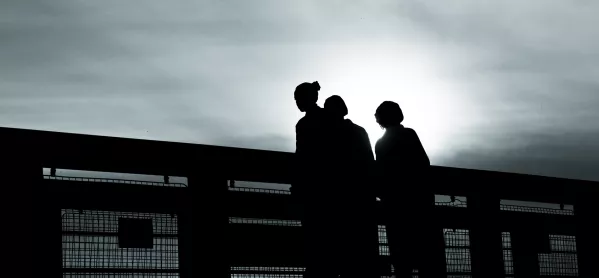Girls and gangs: How schools can spot and stop the dangers

Teachers are often the first to notice that something is wrong.
Changes in a child’s behaviour - them becoming withdrawn or being absent from school - are often danger signs.
These issues may pass but they can be a clue that other things are going on in a young person’s life, including being drawn into risky or exploitative relationships.
For many teachers these are not new concerns, even if the methods being employed by the exploiters are increasingly sophisticated and violent. They know that some young people are not receiving the support and protection they need from other under-resourced and overstretched services.
Safeguarding: the worrying rise in child exploitation
As a report I published earlier this week with Manchester Metropolitan University’s Centre for Youth Studies sets out, tens of thousands of these young people are girls.
When boys arrive at A&E with stab wounds, we know that something terrible has happened. The damage to girls can be less visible. They are much more likely than boys to ask for help with mental or sexual health, but our research shows that in the background there can be much more going on.
We heard harrowing stories of girls who were being used to support the activities of criminal gangs by carrying weapons and drugs. What starts as a perceived relationship can turn into violence and control, with sexual assault and rape used as punishment.
- Safeguarding: What can schools do about county lines gangs?
- Gang risks: “Strong link” between exclusions and drugs gangs
- County lines: Seven ways schools can protect pupils from gangs
We heard of girls being filmed as they were sexually exploited or abused, and the footage being used to control or coerce them, and of girls who were caught up in debt bonds being told to take intimate pictures of themselves to pay off their debt.
We heard from girls who desperately want to escape harmful situations but don’t know how to. They are scared about the consequences if they do. Many are deeply suspicious of statutory services, sometimes including schools, and are reluctant to seek help.
Misogyny in primary schools
We also heard anecdotal evidence of a rise in misogynistic behaviour among children, from an increasingly young age, triggered by social media influencers.
One organisation that works with young women who are victims of violence told us that a local school had approached them for advice on identifying sexually harmful behaviour towards girls among its Year 5 and Year 6 boys.
It’s clear that we need to start working with children at an early age before misogynistic tropes become reinforced and grow into more serious violence, and that we need primary school-age education programmes specifically about misogyny.
It was concerning, too, to hear how some young women are being stereotyped at school as “troublemakers” or “dramatic” or “aggressive”. The “adultification” of black girls is still too apparent.
However, we also heard how a greater focus on early help and the development of gender-based support can make a huge difference.
How schools can help
My co-author for the report, Dr Deborah Jump, worked alongside the Getting Out For Good (GOFG) programme in Manchester, and its work is highlighted in our report.
Its mentoring relationships were described by those girls taking part as meaningful and empowering. By creating environments where girls and young women can build trusted relationships with people whom they can relate to, and then go on to disclose what is going on in their lives, GOFG helped to protect vulnerable girls.
With the accompanying resource, this kind of work could be happening in and around more of our schools. It is about being aware of what girls may be going through, taking them seriously and helping them to gain the confidence and agency to make good choices.
When the warning signs are there, we need to ensure that they are understood and that they trigger a proper response.
That’s why our recommendations focus on schools, including better training for teachers, alongside health professionals, the police and children’s services; raising awareness of the impact of vulnerability and trauma on girls; and enabling teachers to spot signs of exploitation.
We would like to see an automatic referral to a female youth worker when a girl is at risk of education exclusion or slips off the radar, and multi-disciplinary teams being established around secondary schools to ensure joined-up, accessible support for girls and their families.
Schools can’t do everything on their own, and they need to be funded properly if we are to ask them to do more, but a more trauma-informed and inclusive approach can help those girls at risk escape potentially damaging situations outside school and stop them suffering in silence.
Anne Longfield CBE is chair of the Commission on Young Lives and a former children’s commissioner for England
You need a Tes subscription to read this article
Subscribe now to read this article and get other subscriber-only content:
- Unlimited access to all Tes magazine content
- Exclusive subscriber-only stories
- Award-winning email newsletters
Already a subscriber? Log in
You need a subscription to read this article
Subscribe now to read this article and get other subscriber-only content, including:
- Unlimited access to all Tes magazine content
- Exclusive subscriber-only stories
- Award-winning email newsletters



